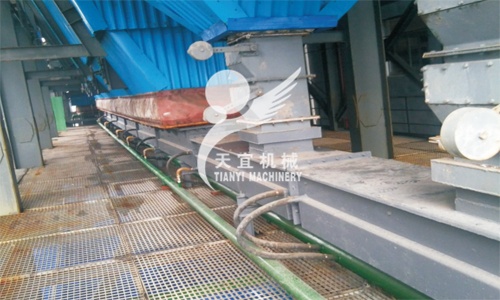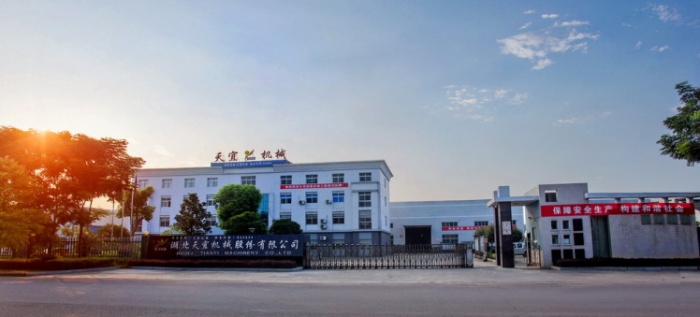What is conveying equipment?
Conveying equipment, also known as material handling equipment, is a type of machinery used to transport goods or materials from one place to another. It is an essential part of many industries such as manufacturing, construction, and logistics. With the advancement of technology, conveying equipment has become more efficient, reliable, and versatile, allowing businesses to improve their productivity and reduce manual labor.
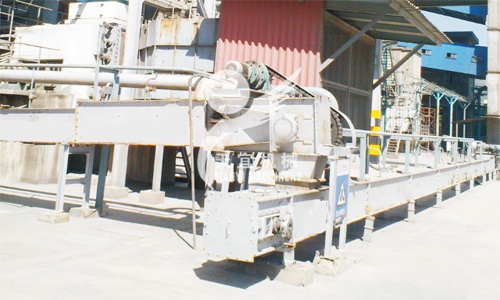
Types of Conveying Equipment
Depending on the specific needs and requirements of a business, there are various types of conveying equipment available in the market. Some of the most common types are:
1. Belt Conveyors - These are the most widely used type of conveying equipment and consist of a continuous belt that rotates to transport goods or materials. Belt conveyors are used in many industries, from mining to food processing, and can transport various types of materials, including bulk items, packages, and even people.
2. Roller Conveyors - This type of conveying equipment uses rollers to transport goods or materials along a path. Roller conveyors are commonly used in warehouses, distribution centers, and assembly lines. They are efficient for moving heavy items and are available in various configurations, including straight, curved, or inclined.
3. Screw Conveyors - A screw conveyor consists of a rotating screw inside a trough or tube. As the screw rotates, it pushes the material along the length of the conveyor. Screw conveyors are commonly used for handling powders, granules, and other small materials in industries such as agriculture, chemical processing, and wastewater treatment.
4. Pneumatic Conveyors - These use air pressure to transport materials through a pipeline or duct. They are commonly used in industries where the material needs to be moved quickly or at a specific angle, such as in the food processing and pharmaceutical industries.
5. Bucket Elevators - A bucket elevator uses buckets attached to a belt or chain to transport materials vertically. They are commonly used in industries such as mining, agriculture, and construction to move bulk materials like grains, ores, and cement.
Benefits of Conveying Equipment
1. Increased Efficiency - One of the primary benefits of conveying equipment is its ability to improve efficiency and productivity. By automating the process of material handling, businesses can save time and reduce manual labor, resulting in increased output and profitability.
2. Safe and Reliable - Conveying equipment is designed to be safe and efficient, reducing the risk of accidents or injuries in the workplace. It is also more reliable compared to manual handling methods, which can be affected by human error or fatigue.
3. Versatility - Depending on the type of business and the materials being transported, there is a wide range of conveying equipment available, making it a versatile solution for various industries. Conveyors can be customized and designed to fit specific needs, such as the need for inclines, declines, or twists, making them suitable for different environments.
4. Cost-Effective - While the initial cost of purchasing conveying equipment may be high, it can result in long-term cost savings. With improved efficiency and reduced labor costs, businesses can see a return on their investment in a relatively short period.
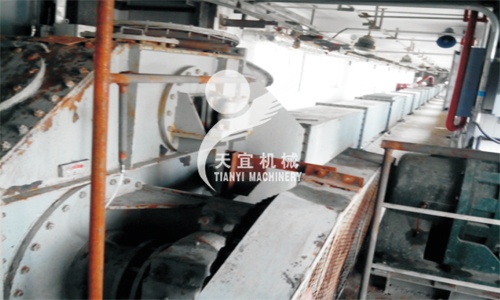
Applications of Conveying Equipment
1. Manufacturing - Conveying equipment is used extensively in the manufacturing industry to transport raw materials, finished products, and sub-assemblies between different stages of production. This helps businesses to streamline their processes, reduce manual labor, and increase output.
2. Warehousing and Distribution - In the warehousing and distribution industry, conveying equipment is crucial for the sorting, loading, and unloading of goods. It allows for quick and efficient movement of products throughout the warehouse or distribution center, reducing the time it takes for products to reach the end customer.
3. Mining - In the mining industry, conveying equipment is used for transporting ores, coal, and other materials from the mining site to processing plants or storage facilities. The use of conveyors in mining has significantly improved efficiency and safety, reducing the need for manual labor in hazardous mining environments.
4. Construction - Conveyors are also widely used in the construction industry for transporting and handling materials such as gravel, sand, and cement. They can be used to move materials from the truck to the construction site, and can also be used to transfer materials between floors of a building.
5. Agriculture - In the agriculture industry, conveying equipment is commonly used for moving grains, fruits, and vegetables throughout the production and processing process. It helps to increase efficiency and reduce manual labor required for handling heavy or bulky agricultural products.
Maintenance and Safety Considerations
To ensure the safe and efficient operation of conveying equipment, regular maintenance is essential. This includes inspecting and replacing worn or damaged parts, cleaning and lubricating chains and belts, and checking for any signs of wear and tear. Maintenance should be carried out according to the manufacturer's recommendations to prevent breakdowns and prolong the life of the equipment.
In addition to maintenance, safety is a critical consideration when using conveying equipment. Employers should provide proper training to their employees on the correct use of the equipment and implement safety protocols to prevent accidents or injuries. It is also important to regularly inspect the equipment for any potential hazards and address them immediately.
Conveying equipment plays an essential role in various industries, providing a safe, efficient, and cost-effective solution for material handling. With its numerous types and applications, businesses can find the most suitable conveying equipment to meet their specific needs and improve their operations. Regular maintenance and safety practices are also crucial to ensure the smooth and safe operation of conveying equipment. With the continuous advancements in technology, the future of conveying equipment looks promising, with further improvements in efficiency, safety, and versatility.
HU BEI TIANYI MACHINERY CO.,LTD is a high-tech enterprises, which specialize in designing & producing &installing conveying equipment, crush equipment and screening equipment.
The company is located in Yidu City,Hubei Province, which is involved in Yi Chang Three Gorges “half-an -hour” economic area and at the junction of Hubei, Sichuan and Hunan Provinces. It is only 50 kilometers far from the Three Gorges Dam & 20 kilometers apart from Three Gorges Airport. Besides, Jiao-liu railway and the Hu-rong freeway is crossing our city. Therefore, the transportation is pretty convenient for all of us.
Tianyi Machinery is mainly designs and produces related conveying equipment for electric power, metallurgy,
chemical industry, cement and other industries. Especially in thermal power industry, coal transport, coal feeding and
dry slag removal, limestone receiving system in limestone slurry preparation in flue gas desulfurization system, limestone powder transportation in dry desulfurization system; Raw material transportation, process dust collection system, waste heat boiler high temperature slag transportation, waste incineration power plant high temperature bottom slag and coal economizer high temperature ash and slag transportation have unique advantages.
How does the conveying equipment achieve the function of material transportation?
Conveying equipment is used to move materials from one location to another. This equipment is essential in industries such as manufacturing, mining, and construction, where moving materials efficiently and quickly is necessary for the production process.
There are several different types of conveying equipment, including belt conveyors, screw conveyors, bucket elevators, and pneumatic conveyors. Each type of equipment works in a unique way, but they all achieve the function of material transportation in a similar manner.
1. Belt Conveyors
Belt conveyors consist of a continuous loop of material, typically made of rubber or fabric, that moves around two or more pulleys. The belt is supported by rollers, allowing it to move smoothly and continuously. Material is placed on the belt at one end and is carried along its length to the other end where it can be unloaded.
2. Screw Conveyors
Screw conveyors use a rotating screw or auger to move materials along a fixed path. As the auger turns, the material is pushed forward or lifted upward, depending on the design. This equipment is typically used for moving granular or powdered materials.
3. Bucket Elevators
Bucket elevators consist of a series of buckets attached to a belt or chain. The buckets are designed to scoop up materials from a lower level and transport them to a higher level. Bucket elevators are commonly used in industries that require vertical transportation of materials, such as grain handling and mining.
4. Pneumatic Conveyors
Pneumatic conveyors use air pressure to move materials along a pipeline. The material is suspended in a fast-moving air stream and is carried to its destination. This type of equipment is often used to transport lightweight materials over long distances.
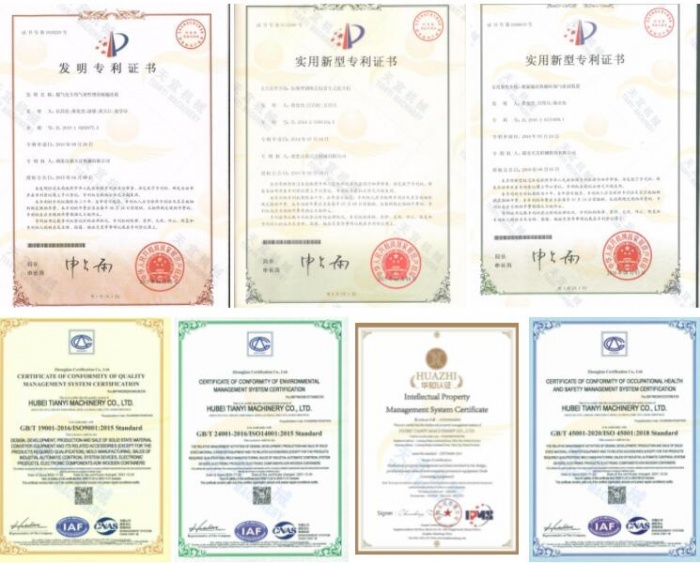
In which industries and places is Conveying equipment commonly used?
Conveying equipment is commonly used in a variety of industries and places, including:
1. Manufacturing plants: Conveyors are used in manufacturing plants to transport and move raw materials, finished products, and components between different areas of the production process.
2. Warehouses and distribution centers: Conveyors are essential in warehouses and distribution centers for efficiently moving goods, such as boxes and pallets, from one location to another.
3. Mining and extraction industries: Conveyors are widely used in the mining and extraction industries to transport materials, such as coal, ore, and minerals, from the mining site to processing facilities.
4. Agriculture and farming: Conveyors are used in agriculture and farming operations to transport crops, grains, and feed from one area to another, such as from fields to storage facilities.
5. Food and beverage industry: Conveyors are integral to the food and beverage industry for moving raw ingredients, packaged goods, and finished products throughout the production and packaging process.
6. Airports and transportation hubs: Conveyors are an essential part of the transportation industry, as they are used in airports and other transportation hubs to move luggage and cargo between different areas and modes of transport.
7. Retail and e-commerce: In retail and e-commerce operations, conveyors are used for sorting and moving products in warehouses and distribution centers, as well as for automated checkout and order fulfillment.
8. Construction sites: Conveyors are commonly used in construction sites to transport materials and debris, such as gravel, sand, and concrete, between different areas of the site.
9. Waste management and recycling: Conveyors are used in waste management and recycling facilities to transport and sort different types of waste materials, such as plastics, paper, and metals.
10. Hospitals and healthcare facilities: Conveyors are utilized in hospitals and healthcare facilities for the efficient movement of medical supplies, patient records, and other materials between different departments.
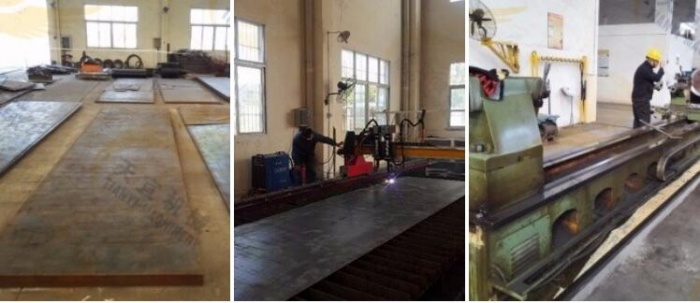
What factors need to be considered in the design and selection of Conveying equipment?
1. Material Properties
2. Capacity Requirements
3. Conveying Distance
4. Speed Requirements
5. Environment and Conditions
6. Layout and Space Constraints
7. Maintenance and Operating Costs


